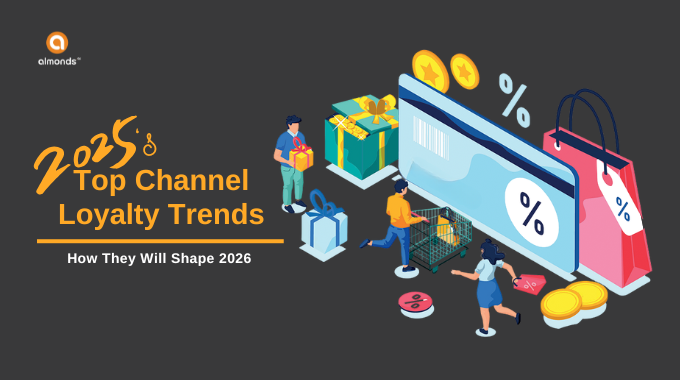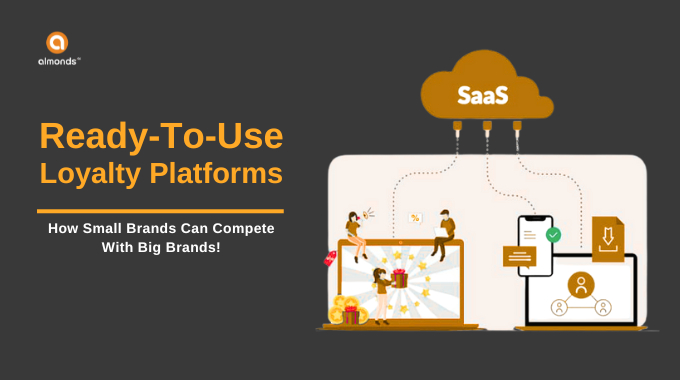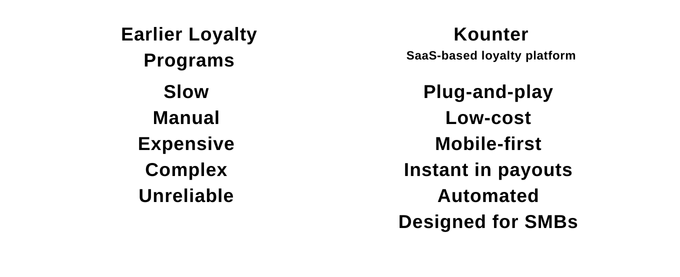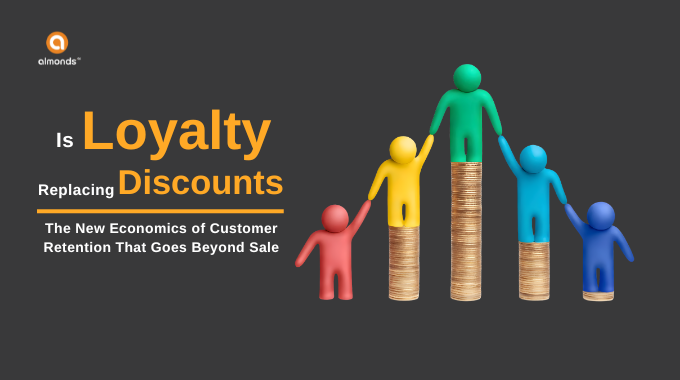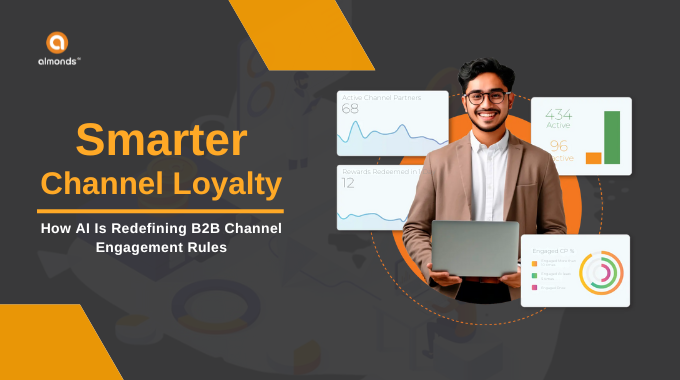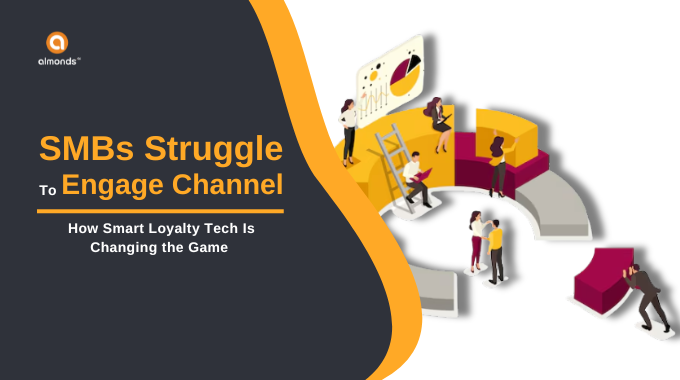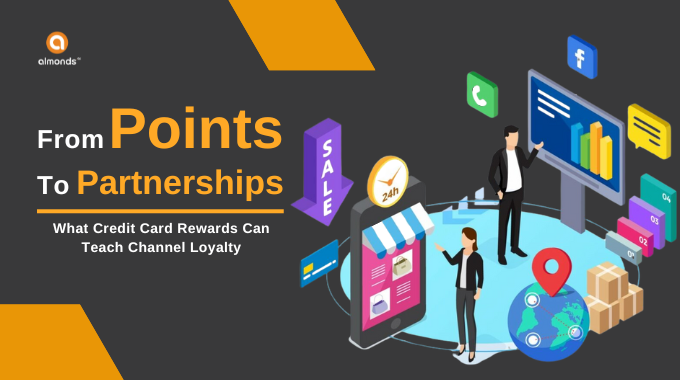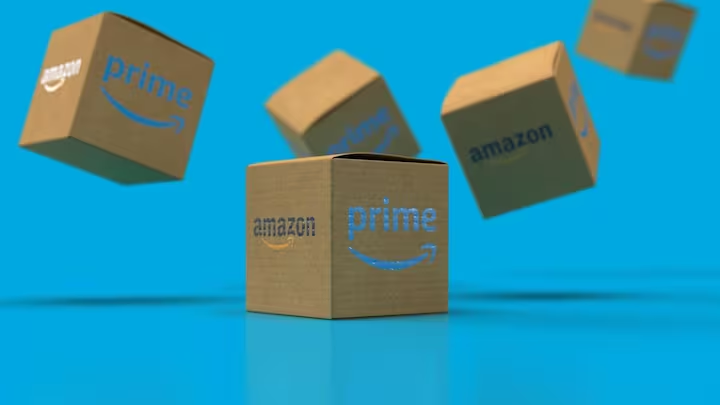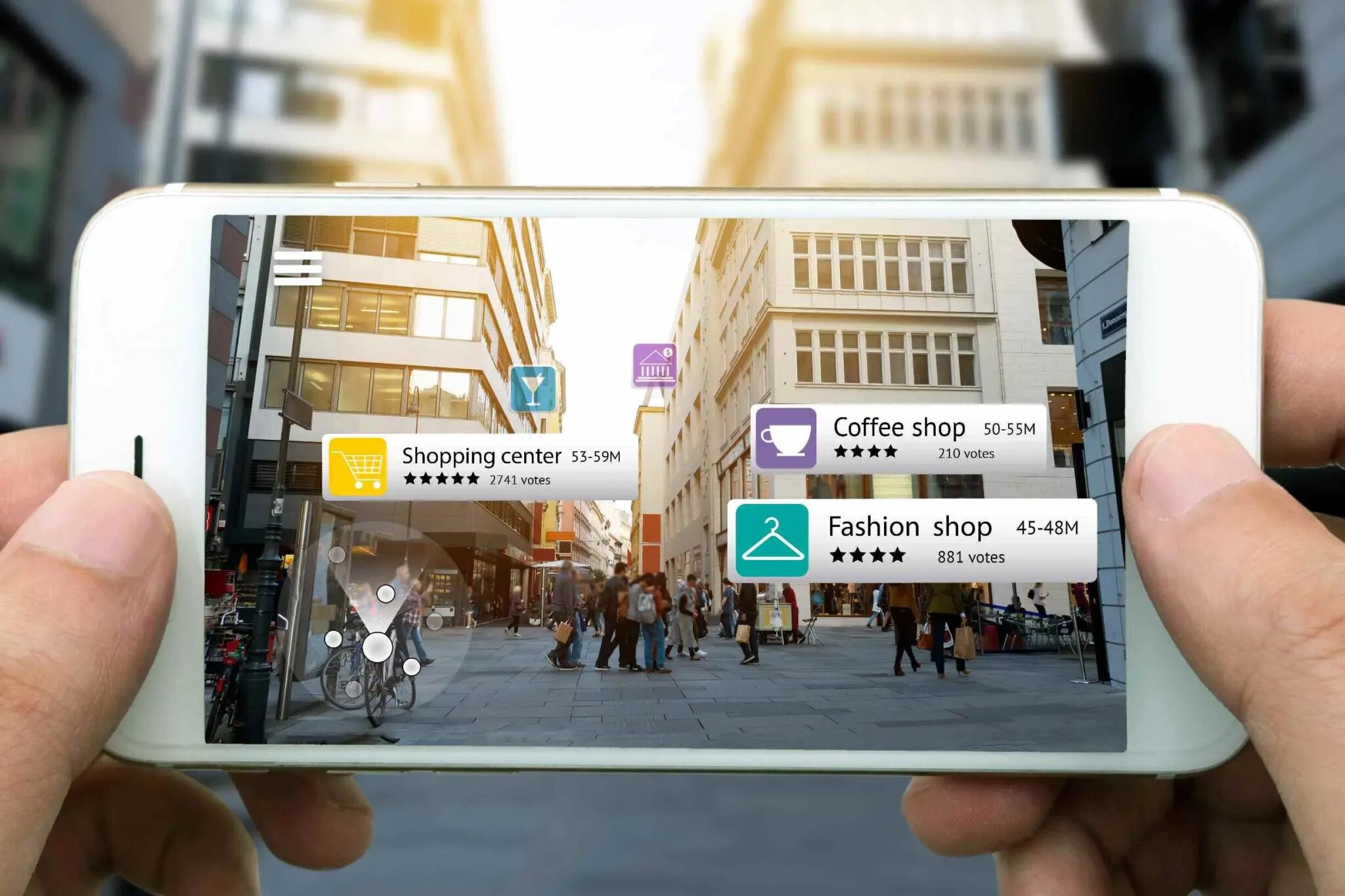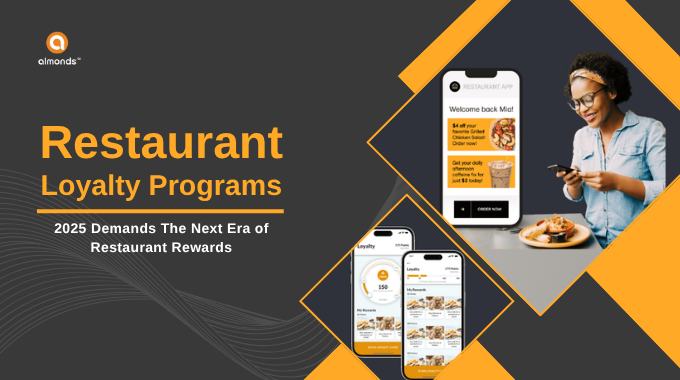India’s FMCG and consumer goods markets are built on one undeniable truth: “The brand that wins the retailer, wins the market.”
In this highly competitive market, small and medium-sized businesses often struggle to maintain mindshare among distributors and retailers when pitted against industry giants. You know the challenge: how do you build lasting channel loyalty and drive consistent sales without the massive budgets of your larger competitors?
The solution lies in a smart, accessible Channel Loyalty Program for SMBs. This isn’t about expensive custom software; it’s about leveraging focused strategies to create deep engagement. This guide will explore exactly how an SMB can implement an effective, high-ROI loyalty program to retain channel partners, boost average order value (AOV), and secure a piece of the market.
Why SMBs Need Channel Loyalty More Than Ever
Small brands aren’t losing because of product quality. They’re losing because of engagement gaps.
1. Limited Sales Manpower
Large brands can afford weekly visits across territories. SMBs cannot, which means:
- Fewer order-taking touchpoints
- Fewer reminders
- Fewer relationship-building moments
Retailers naturally push brands that stay in touch. Loyalty programs create digital presence, so even without feet-on-street, brands remain visible.
2. Low Retail Visibility
Visibility elements, racks, danglers, window branding, and counter strips require serious investment. When SMBs cannot match these spends, they get pushed to lower shelves.
A loyalty engine solves this differently: “Retailers prioritize brands that reward consistently, not just the brands that shout the loudest.”
3. Lack of Data Intelligence
Most SMBs rely entirely on distributors for market information.
They rarely know:
- Who is selling how much
- Which retailers are active/inactive
- Which products move fastest in which regions
- Which schemes truly worked
Without data, SMBs market blindly. A B2B loyalty platform turns every invoice into AI-powered real-time analytics, giving small brands the advantage of clarity.
4. Inconsistent Channel Engagement
Big brands run schemes every month; SMBs run them 2-4 times a year. Engagement becomes seasonal, not continuous. B2B loyalty programs solve this by creating daily and weekly micro-engagement loops, keeping SMBs consistently in front of partners.
How Modern Channel Loyalty Levels the Playing Field
This is where the real transformation happens.
1. Instant Rewards Build Faster Trust
Retailers repeatedly say the same thing: “Reward fast, I’ll support you fast.”
Delayed incentives generally weaken trust, as we can observe in traditional schemes. Instant payouts (UPI, cashback, vouchers) build credibility immediately, followed by loyalty.
Research shows instant gratification increases channel participation by 3–5X, because partners feel valued in real time. For SMBs, speed becomes a competitive advantage over big brands.
2. Smart Loyalty Programs Remove the Need for Big Teams
Even without a large field force, SMBs can run programs that look and feel enterprise-grade.
A modern loyalty platform:
- Onboards retailers digitally
- Shares schemes instantly on WhatsApp and app
- Sends auto-reminders for participation
- Collects invoices without manual verification
- Gathers retailer location and buying patterns
- Gamifies monthly engagement
This means a 5-person SMB team can achieve what earlier required 50 people.
3. Data Becomes SMBs’ Most Powerful Weapon
Once every invoice flows through a loyalty system, SMBs gain access to insights they never had:
- Which retailers buy repeatedly
- Who buys in specific SKUs
- Who is declining or drifting
- Which cities deliver highest ROI
- What promotions drive action
- Who deserves exclusive rewards
- Where distributor claims don’t match retailer activity
For an SMB, this intelligence provides an unprecedented advantage, allowing them to plan smarter, negotiate stronger, and scale faster.
4. Gamification Reinforces Everyday Behavior
Gamification is not about games — it’s about habit creation.
When retailers receive:
- Streak bonuses
- Micro challenges
- Weekend boosters
- Invoice-based missions
- Surprise rewards
When channel partners check the app more often and engage more frequently. It turns loyalty from a quarterly event into a daily habit loop.
5. Transparency Builds Emotional Loyalty
Retailers lose interest when:
- Points are unclear
- Rewards are delayed
- Rules are confusing
- Claims get rejected without explanation
Small brands can win big simply by offering:
- Visible points
- Clear terms
- Consistent rewards
- Self-trackable dashboards
- Trustworthy timelines
Clarity creates loyalty more powerfully than discounts.
What SMBs Should Look for in a Channel Loyalty Platform
Most SMBs don’t need a massive, complex system.
They need simple, fast, reliable tech with the right features:
Must-Have Capabilities
- Mobile-first retailer app
- Instant rewards (UPI/gift cards)
- AI-based invoice validation
- Digital onboarding
- Regional language support
- Gamification modules
- Scheme automation
- Anti-fraud protection
- Real-time analytics dashboard
- WhatsApp communication
- Low-cost subscription model
These features ensure that even small brands can operate loyalty programs that feel enterprise-grade without enterprise budgets.
Types of Loyalty Programs SMBs Can Run
Every FMCG and consumer brand category is powered by a different type of channel influencer. For SMBs, choosing the right loyalty program type is essential because it directly affects who drives the sale, who influences purchase behavior, and who controls order flow. Below is a more detailed view of each program type.
1. Retailer Loyalty Programs
The Core Engine of FMCG Growth
Retailers — from Kirana stores to chemists to general trade outlets — are the most critical driver of FMCG sales in India. Over 90% of FMCG sales still come through retail-driven ecosystems, especially general trade.
A retailer loyalty program helps SMBs:
- Motivate retailers to stock, display, and push their brand over competitors
- Increase repeat orders, reducing dependency on distributor pressure
- Build long-term relationships with outlets even without frequent field visits
- Introduce new SKUs with targeted incentives
For small brands, this program becomes the primary tool to ensure presence and recall at the counter, without paying for expensive visibility or manpower.
2. Distributor Loyalty Programs
Driving Consistent Secondary Push
Distributors decide which SKU gets pushed aggressively and which brand gets priority during sales beats. However, SMBs often rank low in their priority list because of:
- Lower margins
- Fewer schemes
- Limited personal relationships
A distributor loyalty program helps small brands:
- Encourage consistent secondary sales
- Improve order frequency and fill rates
- Align distributor incentives with brand priorities
- Build loyalty despite competing with big-budget brands
It also gives brands real-time visibility into secondary movement, an area where SMBs traditionally have no control.
3. Channel Influencers Loyalty Programs
Mechanic, Electrician, and Painter Loyalty Programs
In categories like automotive aftermarket, appliances, paints, electricals, hardware, channel influencers like mechanics and electricians often drive demand more than retailers.
Example: A mechanic recommending a lubricant, battery, or spare part has more influence than the retailer selling it.
A specialized loyalty program for these influencers helps SMBs:
- Capture field-level influence via QR scans or service-based rewards
- Build strong emotional loyalty by recognizing their contribution
- Cross-sell new products through training modules and micro-learning
- Maintain influence even if competitors offer higher trade margins
For SMBs in the aftermarket, these programs create direct demand, bypassing retail complexity.
4. Nano Influencer Loyalty
The New-Age Recommendation Engine
Categories like beauty, personal care, footwear, apparel, and even small appliances are increasingly driven by in-store influencers, beauty advisors, or local nano-influencers.
A loyalty program targeted to them enables SMBs to:
- Incentivize product recommendations
- Reward genuine advocacy at the point of sale
- Compete with large brands’ promotional programs
- Track which influencer drives actual sales
For small brands without deep marketing pockets, this becomes a high-ROI alternative to brand promoters.
5. Field Force Micro-Incentive Programs
Driving Internal Productivity
SMBs often rely on small sales teams handling large territories. A micro-incentive program motivates field teams to:
- Increase outlet coverage
- Ensure visibility of activities
- Capture retailer data
- Drive new outlet activation
- Push new launches consistently
Instead of monthly rewards, daily and weekly micro-rewards create high-frequency productivity loops, helping SMBs operate with efficiency similar to enterprise-level sales teams.
The ROI SMBs Can Expect
A well-designed retailer loyalty program isn’t just an engagement tool; it’s a growth multiplier. Below is a deeper breakdown of each ROI outcome with context on how SMBs benefit.
a. 2–4x Increase in Repeat Orders
Retailers reorder when they feel valued, not when they get discounts. Instant visibility of points, clear milestones, and easy rewards encourage retailers to repeat purchases faster. SMBs gain:
- More consistent sales cycles
- Lesser dependence on distributor persuasion
- Ability to forecast demand better
- Higher SKU penetration
For small brands with limited shelf space, repeat orders are survival fuel.
b. Higher Channel Retention
Retailers today switch brands faster than ever because of competing schemes and distributor relationships. A loyalty program creates:
- Emotional stickiness
- Habit-driven ordering
- Recognition-based attachment
- Predictable engagement
This reduces churn dramatically, a major cost-saving for SMBs trying to stabilize their distribution network.
c. Increased Store Visibility
Visibility budgets can drain an SMB’s finances. However, retailers naturally push brands that reward them consistently. A loyalty engine drives:
- Better product placement
- Higher on-shelf availability
- More proactive retailer advocacy
- Suggested selling at the counter
This visibility isn’t bought, it’s earned, making it far more sustainable.
d. Reliable Retail Data
For most SMBs, market information is limited to distributor updates, often incomplete or biased. A loyalty system provides:
- SKU-level insights
- Geography-wise performance
- High-value retailer identification
- Seasonal and behavioral trends
- Real-time scheme effectiveness
With data, SMBs stop spending blindly and start investing with precision.
e. Lower Cost vs. Traditional Schemes
Traditional trade schemes drain money through:
- Manual verification
- Fraud
- Delayed payouts
- Middlemen involvement
- Physical reward logistics
A digital loyalty system automates everything, reducing costs by 30–50%, while increasing participation through transparency and simplicity.
f. Faster Territory Expansion
SMBs don’t need to wait months to build new retail relationships. A loyalty app allows retailers to self-onboard via:
- QR code
- WhatsApp link
- Distributor referral
- Field force activation
Within weeks, SMBs can build hundreds of retailer connections in new regions without adding manpower.
Why SaaS Loyalty Is the Only Scalable Solution for SMBs
SaaS is not just a cheaper alternative.It is the only viable model for SMBs to run modern channel programs. Traditional loyalty platforms required:
- Long development cycles
- Lakhs of investment
- Heavy IT involvement
- Complex maintenance
- Server and infrastructure management
SaaS based loyalty platforms flip the model completely:
- Affordable: Monthly or annual subscription — no massive upfront cost.
- Plug-and-Play: Programs go live in hours, not months.
- AI-Powered: Real-time fraud detection, invoice validation, and behavior insights.
- Mobile-First: Perfect for India’s retailer ecosystem.
- Automated: From points to payouts to communication.
- Scalable: Add 10 or 10,000 retailers — the platform handles it.
- SMB-Friendly: Simple dashboards, low training need, minimal maintenance.
This model removes every barrier that previously stopped SMBs from launching professional loyalty programs.
How Kounter Levels the Playing Field for SMBs
In a marketplace where large brands traditionally win by sheer scale — larger field teams, bigger trade budgets, and deeper visibility, small businesses have always been expected to play catch-up. But the landscape is changing. Technology has finally democratized loyalty, and solutions like Kounter by Almonds Ai are proving that SMBs can compete on equal footing when given the right tools.
Kounter was built around a simple belief:
Small brands deserve enterprise-grade loyalty capabilities without enterprise-grade budgets.
Instead of months of costly development, Kounter offers a ready-to-launch, no-IT-required loyalty system that SMBs can activate within days. Retailers, distributors, and influencers can onboard digitally through QR codes, WhatsApp links, and simple self-registration, allowing even small brands to build wide channel reach without a large team.
But the real impact comes from what happens after onboarding.
- Instant rewards via UPI, vouchers, and gift cards
- AI-driven invoice validation prevents fraud
- Gamified missions, streaks, and challenges
- Geo-tagging and retailer-level sales tracking
- Automated communication via WhatsApp and push notifications
- A unified dashboard for real-time insights
The outcome is simple yet transformative:
 Kounter doesn’t just help SMBs compete. It helps them win by doing what big brands struggle to achieve regularly: Moving faster, engaging smarter, rewarding instantly, and building deeper loyalty at lower cost.
Kounter doesn’t just help SMBs compete. It helps them win by doing what big brands struggle to achieve regularly: Moving faster, engaging smarter, rewarding instantly, and building deeper loyalty at lower cost.
In a channel-driven market like India, relationships decide who gets stocked, who gets pushed, and who grows. With platforms like Kounter, those relationships no longer depend on the size of a brand’s wallet, only the strength of its strategy.
For the first time, the playing field is truly level & SMBs finally have the advantage.
FAQs
Q: Why do SMBs need channel loyalty programs?
SMBs need channel loyalty programs because they lack large sales teams, consistent visibility, and access to retail data. A digital loyalty system helps them engage retailers daily, reward consistently, collect reliable market intelligence, and drive repeat orders — closing the competitive gap with big brands.
Q: How can small brands compete with well-established giants?
Small brands can compete through instant rewards, automated engagement, AI-based fraud detection, and digital onboarding. These tools allow SMBs to build strong retailer relationships, increase repeat orders, and expand territories without increasing manpower or trade budgets.
Q: What type of loyalty program works best for SMBs?
The most effective loyalty programs for SMBs include retailer loyalty, distributor loyalty, mechanic/electrician loyalty, field-force micro-incentive programs, and nano-influencer loyalty. Each program targets the real decision-maker who controls product movement in different categories.
Q: What ROI can SMBs expect from channel loyalty?
A well-designed program delivers:
• 2–4X increase in repeat orders
• Higher retailer retention
• Better store visibility
• More accurate retail data
• Lower scheme cost
• Faster expansion across territories
Q: How do retailer loyalty programs help SMBs?
Kounter gives SMBs a ready-to-launch loyalty system with digital onboarding, UPI instant rewards, AI invoice scanning, gamification, geo-tag tracking, and a real-time analytics dashboard. It allows small brands to operate with the speed and efficiency of large brands — at a fraction of the cost.

